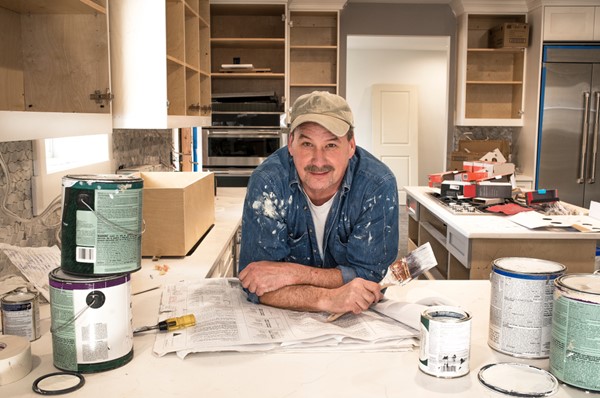
You’ve been binging on HGTV and DIY network every weekend while you save up your money and you’re ready to take the plunge. Your agent tours you through several potentials and there it is … the perfect corner lot, the mediocre house with the awkward layout, chopped up floor plan, aging kitchen, and dated bathrooms. It’s just waiting to reveal shiplap behind the cracked plaster, original hardwood floors under the stained and dusty carpet, and other treasures you can only dream about until their uncovered.
You make the deal … now it’s all yours. Where do you go from here?
Find the right professional
Ideally, a contractor with renovation experience toured the property with you, casting a professional eye over potential problems and exciting possibilities before you made the deal. If not, engage one now. Renovations require specific knowledge of structural issues like which walls to safely remove giving you that open-concept floor plan and which might be load-bearing. Experienced pros know when to call in an engineer to determine whether to expose the beams or if the wiring needs pulling.
Make a plan
As with any project, make a basic plan before you start. Unlike new-builds, however, your plan might be more general until you’ve removed walls and studs, discarded old cabinets and fixtures, and revealed the location of existing drainpipes, wiring, support structures, and other hidden gems. With everything visible determined, it’s time for demolition. Just know that with a renovation, once demolition starts, plans can change. A supporting beam here, an unmovable drain there, a hidden chimney under that plaster … could derail your perfect original plans. When that happens, a pro can help you figure out what do.
Don’t underestimate time
Watching a 57-minute renovation on television might give you an unrealistic expectation of how long it might be until your home is ready. After all, you don’t have a trove of assistants ordering cabinets, changing out flooring samples and visiting showrooms to cull through items for you. Choice fatigue (the inability to choose between too many choices) can stymy a project for a novice.
Normal delays, hidden issues
You’ve planned, then modified the plans after the demo, selected, deselected, then re-selected the cabinets, flooring, and fixtures. Now it’s time to get approvals and permits. Moving a project through the approval process in your municipality could be smooth sailing or rife with delays. Your professional contractor should help you navigate this process, but waiting for a permit can add days, or weeks to a project.
In addition to the normal delays, your demolition may uncover other issues that require remediation. These include lead, mold, asbestos, termite damage, shifting foundations, broken pipes, and myriad other possibilities. Bringing wiring up to code and changing out electrical panels consumes precious time and adds to the delays.
Before taking on a fixer-upper, seek the advice of a real estate professional with renovation experience to help you make a plan, and plan for contingencies.
About the Author

Jeanne Caldwell
I am in the business of learning, and when you are buying a home, learning what the "perfect" beach dream home looks like to you is the starting point for finding it. When you are selling your family's home, hearing about what you have enjoyed while you lived there helps me find the next happy owners. It is a new frontier with targeting your message these days. Digital Platforms allow marketing to a targeted homebuyer who is looking for your home! As a Realtor, I use the North East Florida Association of Realtors MLS, and the many platforms included with it. Also used is Social Media, Digital Advertising, as well as good ole Print, Open Houses, and Signage in front of your house. Thinking about buying or selling? I am ready to hear what you have to say. Call Anytime. 904-699-4991